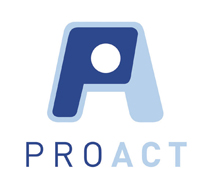July 26, 2022, marks 32 years since the passing of federal legislation prohibiting discrimination against individuals with disabilities! ProAct celebrates the passing of this legislation and thanks its staff for committing to the work they do every day for individuals with disabilities. More from the ProAct Diversity, Equity and Inclusion Committee:
Source: ada.gov
The ADA is one of America’s most comprehensive pieces of civil rights legislation that prohibits discrimination and guarantees that people with disabilities have the same opportunities as everyone else to participate in the mainstream of American life — to enjoy employment opportunities, to purchase goods and services, and to participate in State and local government programs and services.
The Americans with Disabilities Act (ADA) prohibits discrimination against people with disabilities in several areas, including employment, transportation, public accommodations, communications, and access to state and local government’ programs and services. As it relates to employment, Title I of the ADA protects the rights of both employees and job seekers.
Some general information regarding the ADA:
What Is the List of Disabilities Covered Under ADA?
The list of disabilities covered under American with Disabilities Act (ADA) refers to all the disabilities for which an employee is protected from discrimination by employers. The Americans with Disabilities Act of 1990, a civil rights law, prohibits employers from discriminating against employees with disabilities.
The American with Disabilities Act helps with employers or other people with disabilities from their job functions. In employment, state and local government, public accommodations, commercial facilities, transportation, and telecommunications, the ADA outlaw’s discrimination on the basis of disability.
Understanding ADA
Title I of the Americans with Disabilities Act ensures that employees with disabilities are not excluded from taking advantage of job opportunities unless they are not qualified to do the job. This applies to all aspects of employment, such as:
- Hiring
- Job application procedures
- Compensation
- Training
- Advancement
- Hiring and firing
- Benefits
Reasonable Accommodations
Under the ADA, covered employers are also required to make reasonable accommodations for qualified people who have physical or mental limitations. The only time an employer may be exempt from this is if it can show that a reasonable accommodation would lead to undue hardship for the company’s operations.
Impairments Limiting Life activities
People with disabilities mainly those with bodily injuries or function conditions and basic daily accommodations are included in major life activities. The ADA offers examples of undue hardship and reasonable accommodations. The ADA also prevents employers from discriminating against employees and job applicants who have mental and physical impairments that limit major life activities. Some examples of these life activities include:
- Seeing
- Walking
- Communicating
- Sitting
- Reading
Treatment is usually to help slow down or soothe the pain. The Rehabilitation Act standards for determining employment discrimination are the same as those used in title I of the Americans with Disabilities Act.
What Qualifies as an ADA Disability?
According to the ADA Amendments Act of 2008, covered entities should interpret the ADA broadly to include as many disabilities as possible and protect as many people as possible.
Under the ADA, an impairment needs to be a physiological or mental disorder. Depression, stress, and similar conditions are only sometimes considered impairments under the ADA. Whether depression and stress are considered impairments depends on if they result from a documented mental or physiological disorder or if they result from personal life or job pressures. The impairment must substantially limit at least one major life activity.
What is a Protected Disability?
Under most employment legislation, such as Age Discrimination in Employment Act or Title VII, it is fairly obvious whether a person is a part of a protected class. However, under the ADA, it is a bit more complicated to determine whether a person is part of a protected class.
A person is protected under the ADA against discrimination for employment opportunities. State and local government and other public entities apply the title ii to labor unions and help people with disabilities.
Definition of Disability under ADA
The ADA’s first definition of disability states that a disabled person is someone who has a mental or physical impairment that prevents participation in major life activities. If an individual has a record or history of such an impairment, he is considered disabled. Finally, if the individual is regarded as having a mental or physical impairment, the individual is considered disabled under the ADA’s first definition of disability.
The ADA has a three-pronged definition of disability. If any of the three prongs are satisfied, the individual counts as disabled. The definition of disability of the ADA is based on the Rehabilitation Act’s definition of “handicap.” A judgment under the Rehabilitation Act or the ADA is considered a precedent for the other.
Physical or Mental Impairment
The ADA defines a physical impairment as a physiological disorder or condition, anatomical loss, or cosmetic disfigurement that impacts one or more of these body systems:
- Neurological
- Special-sense organs
- Musculoskeletal
- Digestive
- Cardiovascular
- Respiratory
- Reproductive
- Hemic and lymphatic
- Endocrine
- Skin
- Genitourinary
The ADA defines a mental impairment as any psychological or mental disorder, such as emotional or mental illness, mental retardation, organic brain syndrome, and learning disabilities. The U.S. Equal Employment Opportunity Commission and ADA regulations do not offer a list of all the specific conditions that are considered impairments because it is difficult to be comprehensive. Also, it will be difficult to include new disorders that may develop in the future.
The ADA did include examples of covered mental and physical impairments. Some of these impairments include:
- Muscular dystrophy
- Orthopedic, speech, and hearing impairments
- Visual impairments
- Heart disease
- Epilepsy
- Cerebral palsy
- Mental retardation
- Drug addiction
- HIV infection
- Specific learning disabilities
- Diabetes
Cancer, Multiple Sclerosis, and other serious impairments are not considered disabilities.


